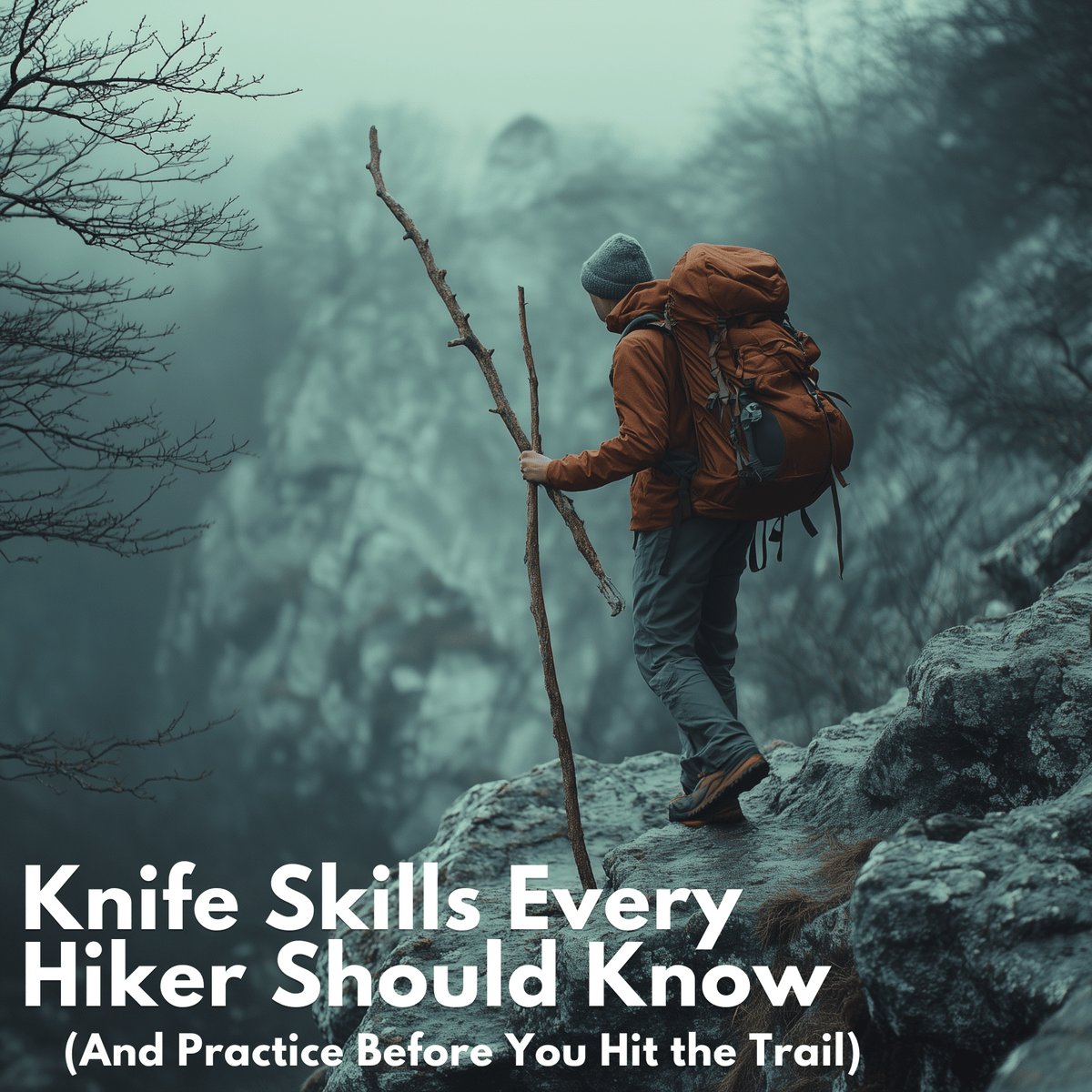
Knife Skills Every Hiker Should Know (And Practice Before You Hit the Trail)
|
|
Time to read 4 min
|
|
Time to read 4 min
Whether you’re hiking a scenic loop or tackling backcountry terrain, a knife is one of the most versatile tools in your pack. But simply carrying one isn’t enough—you need the right skills to make the most of it.
In this post, we cover the essential knife skills every hiker should know , from fire prep to field repairs—plus tips on how to practice these skills safely and effectively using trail-tough blades from Lacey Knives
Table of Content
Feather sticking is a bushcraft technique where thin, curled shavings are carved from a stick to assist in fire starting.
Use controlled, shallow strokes along the grain of dry wood
Curl thin wood shavings into tight coils at the base
Practice with different blade angles for better control
Feathersticking is a vital fire-starting skill for hikers, especially in wet or challenging conditions.
By carving thin, curled shavings from a dry inner section of wood, a hiker creates highly flammable material that easily catches a spark or flame.
This technique is especially useful when kindling is scarce or damp, making it a reliable method for starting a fire for warmth, cooking, or signaling.
Mastering feathersticking ensures a hiker can stay safe and self-sufficient in the backcountry.
Reliable Fixed Blade Knives
2. Cutting Cordage & Making Repairs
Being able to cut cordage is an essential skill for any hiker. Whether it’s for pitching a shelter, securing gear, making emergency repairs, or even creating a splint or stretcher in a survival situation, cordage plays a vital role in outdoor preparedness.
A hiker who can quickly and safely cut rope or paracord ensures they’re ready to adapt to changing conditions, respond to emergencies, and maintain efficiency on the trail.
Tent lines
Backpack straps
Paracord for splints or shelters
Tips:
Keep your blade sharp to avoid fraying
Use a cutting board (even a flat rock) to protect the edge
Learn how to tie strong knots with cut cordage
"There are no shortcuts to any place worth going."
No stakes? No problem. A strong knife lets you:
Carve notches into branches
Sharpen ends into stakes
Whittle down handles for makeshift hammers or tools
The ability to carve tent stakes and basic camp tools with a knife is a valuable skill for any hiker. In unexpected situations—like lost or broken gear—being able to fashion sturdy stakes, pot hangers, or cooking implements from nearby wood can make setting up camp possible and comfortable.
It also reduces dependence on bulky gear, allowing hikers to pack lighter. More importantly, it enhances self-reliance and problem-solving in the backcountry, where improvisation can mean the difference between a tough night and a safe, functional campsite.
Lacey Knives Products
From slicing salami to trimming jerky or filleting a fresh catch:
Use the belly of the blade for slicing
Keep raw and cooked surfaces separate
Rinse, dry, and oil the blade after use to prevent corrosion
Tip: The Lacey Knives Fixed Blade offers control and edge retention perfect for quick backcountry meals.
Your knife might also be used to:
Cut bandages or clothing
Remove splinters or barbs
Reflect sunlight to signal help (if polished)
A knife is a critical tool for hikers in emergency first aid and signaling situations.
In first aid, a knife can be used to cut bandages, clothing, or cordage for splints and tourniquets, or even to remove debris from wounds in a survival scenario.
For signaling, it can reflect sunlight using the blade, carve distress symbols, or create noise by striking metal or rocks.
When other tools aren’t available, a knife can be the difference between being stranded and staying safe—or even getting rescued.
Don’t wait until you’re in the wild to test your knife skills.
Set up a backyard practice zone
Work on carving techniques with scrap wood
Try feather sticking in damp conditions for realism
Practicing knife skills safely at home is essential for any hiker preparing for the wilderness.
It builds confidence, improves control, and helps develop muscle memory for tasks like carving, feather sticking, or cutting cordage.
Learning proper grip, cutting techniques, and safety habits in a controlled environment reduces the risk of injury when out on the trail—where medical help may be far away.
Final Thoughts:
Owning a great knife is just the first step— knowing how to use it unlocks its true value. Build your confidence, protect your gear, and prep for the unexpected with real knife skills that matter.
By honing these skills in advance, hikers are better equipped to handle outdoor challenges calmly and effectively.
Train smart. Hike safe. Trust your blade.
If you want to buy quality knives for the outdoor life, you can check out more on our store




